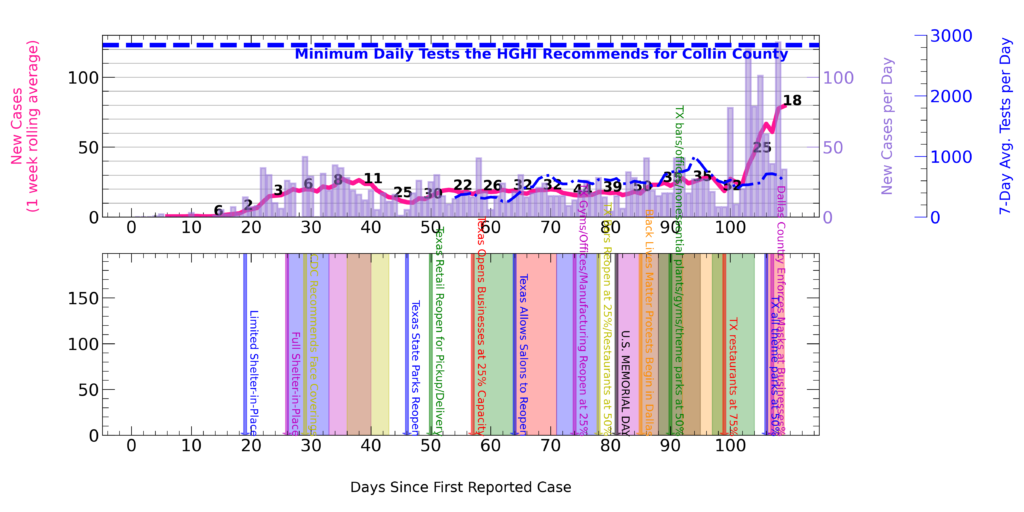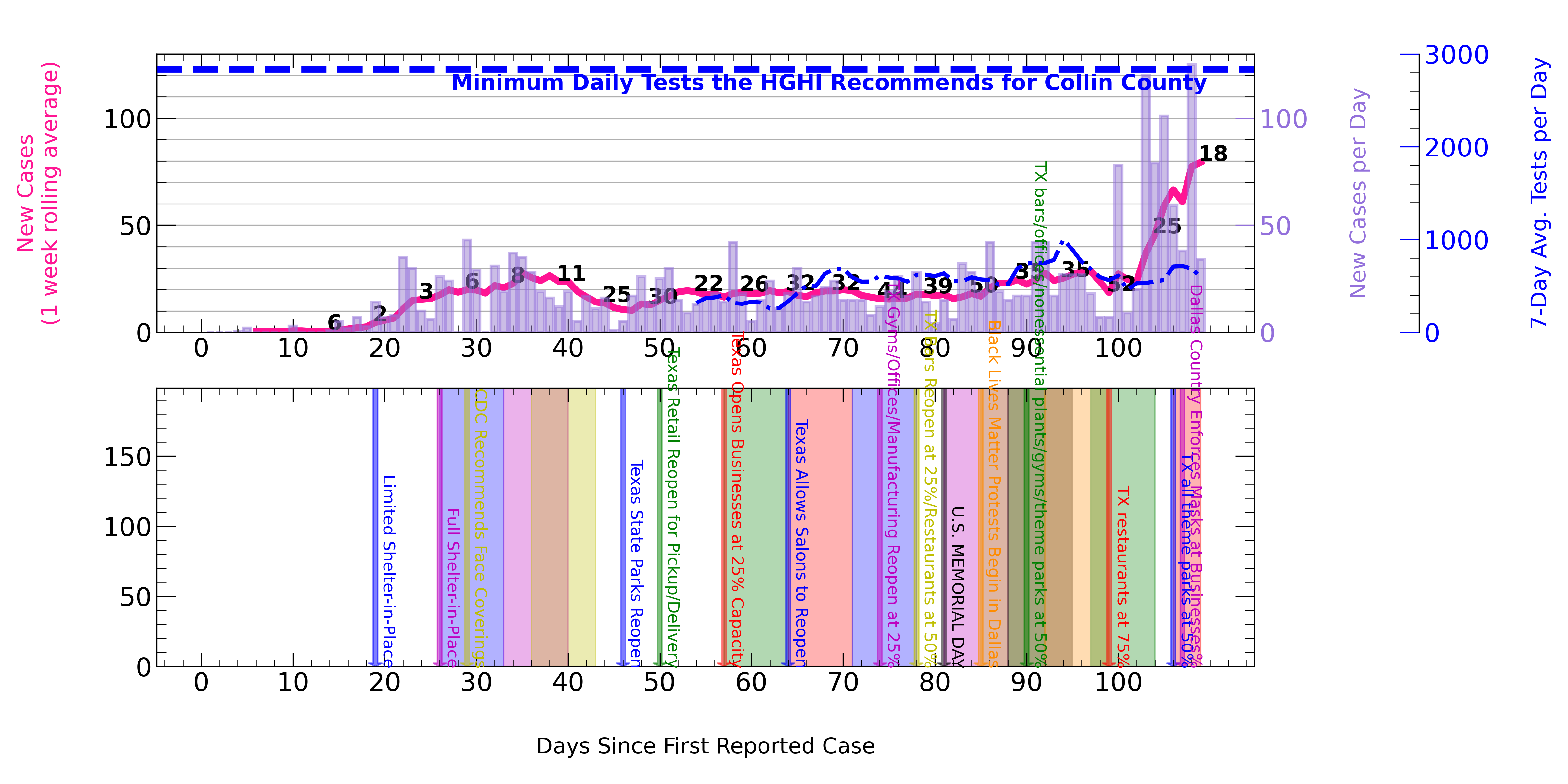Since things have been getting grim in Texas, mirrored in the COVID-19 rise in my own county (Collin), I thought it would be good to learn about one of the things that can help mitigate the spread of SARS-CoV-2 (the virus) without a vaccine. That thing is testing.
Testing for COVID-19 in the community is one of the prongs of a necessary local and national strategy to control and minimize infections from the deadly virus. The three legs [1] of this strategy are:
- Testing frequently to get a snapshot of transmission and spread in the community;
- Isolation of infected and contact tracing to get ahead of the transmission of the virus;
- Social distancing and measures to prevent the person-to-person spread of the virus.
I got curious about one aspect of testing: how much testing should the U.S. be doing each day to get the snapshot needed to make rational decisions about protecting the community?
The answer is basically: half-a-million to one million tests each day.
An example of this recommendation comes from the Harvard Global Health Initiative [2]. This source is cited by projects such as the Covid Tracking Project [3] and other institutions trying to track the virus while spreading information to help the community prevent its spread.
At the current moment, the HGHI recommends the U.S. execute at least 900,000 tests each day. This is the minimum required to achieve the one leg of the above three-legged strategy: testing, tracing, distancing. Previously, the HGHI recommended 500,000 per day as a minimum, but they determined this minimum was too little to do the job. They recently upped their guidance.
Charts of daily tests in the U.S. look like this one, made by the Covid Tracking Project:
Even in one of their recent Tweets, the Covid Tracking Project noted that the number on their charts (500,000 per day) is now an outdated minimum recommendation, and it was only EVER the minimum anyway. The U.S. only met this old minimum target in early June, THREE MONTHS after public health officials said that frequent and voluminous testing was a necessary component to survive the pandemic long enough to develop a vaccine. The lies of the federal administration are laid bare by the above chart; while it might have been possible for people to get a test, not enough testing was actually being done. Part of this was lack of reliable tests, or shortages of testing components, or overly strict criteria for who can get a test in the first place [4]. But the simple fact is that regardless of the reason, while other nations mustered the minimum required effort to stem the tide of the pandemic, the U.S. dawdled, then failed, and only recently seems to be achieving anything close to the bare minimum.
But what about at the local level? Sure, the U.S. is barely doing the outdated bare minimum now, but what about a local region like Collin County? Maybe the national testing minimum has been achieved thanks to a few well-funded and thoughtful regions of the country, while many other regions have simply not been doing what’s necessary or expected. Since states have been left by the federal government to fend for themselves, one expects a wide variation state-by-state. So let’s look at Collin County and the numbers.
The population of the U.S. is currently about 328.2 million people. The population of Collin County, TX is about 1.035 million people. So if the U.S. should be conducting a minimum of 900,000 tests each day, and tests should be evenly distributed across the U.S. by population, we can estimate the minimum number of tests per day that should be conducted in my home county.
The answer is about 2800 tests per day.
What are the actual numbers? The chart below illustrates the answer.

The reality is a crushing disappointment. Collin County is only reporting about 600-800 tests per day, almost a factor of 5 below the daily recommended minimum.
At the local level, my own county gets a failing grade. It’s also been lax in supporting the other legs of the three-leg strategy. People are not required to follow good social distancing practice, especially wearing masks to prevent others from catching any coronavirus you might be shedding. Very little information seems to be available about the contact tracing effort. In testing, we are falling far short of the bare minimum.
As I remind my students, doing the bare minimum earns you a C. Doing far less than that is F country.
Resources
[1] https://www.cdc.gov/coronavirus/2019-ncov/downloads/php/CDC-Activities-Initiatives-for-COVID-19-Response.pdf
[2] https://globalepidemics.org/2020/05/13/ashish-jha-testimony-5-13-2020/
[3] https://covidtracking.com/
[4] For a representative example, see https://whyy.org/episodes/troubles-with-covid-testing/



